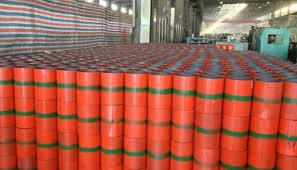- Afrikaans
- Albanian
- Amharic
- Arabic
- Armenian
- Azerbaijani
- Basque
- Belarusian
- Bengali
- Bosnian
- Bulgarian
- Catalan
- Cebuano
- Corsican
- Croatian
- Czech
- Danish
- Dutch
- English
- Esperanto
- Estonian
- Finnish
- French
- Frisian
- Galician
- Georgian
- German
- Greek
- Gujarati
- Haitian Creole
- hausa
- hawaiian
- Hebrew
- Hindi
- Miao
- Hungarian
- Icelandic
- igbo
- Indonesian
- irish
- Italian
- Japanese
- Javanese
- Kannada
- kazakh
- Khmer
- Rwandese
- Korean
- Kurdish
- Kyrgyz
- Lao
- Latin
- Latvian
- Lithuanian
- Luxembourgish
- Macedonian
- Malgashi
- Malay
- Malayalam
- Maltese
- Maori
- Marathi
- Mongolian
- Myanmar
- Nepali
- Norwegian
- Norwegian
- Occitan
- Pashto
- Persian
- Polish
- Portuguese
- Punjabi
- Romanian
- Russian
- Samoan
- Scottish Gaelic
- Serbian
- Sesotho
- Shona
- Sindhi
- Sinhala
- Slovak
- Slovenian
- Somali
- Spanish
- Sundanese
- Swahili
- Swedish
- Tagalog
- Tajik
- Tamil
- Tatar
- Telugu
- Thai
- Turkish
- Turkmen
- Ukrainian
- Urdu
- Uighur
- Uzbek
- Vietnamese
- Welsh
- Bantu
- Yiddish
- Yoruba
- Zulu
Understanding the Basics and Function of a Pup Joint in Oil and Gas Operations
What is a Pup Joint?
In the realm of drilling and oil production, the terminology used can be quite specialized. One such term is pup joint. Understanding what a pup joint is, its purpose, and its applications can provide valuable insights into the operations of the oil and gas industry.
Definition of a Pup Joint
A pup joint is a short section of pipe that is used to adjust the length of a string of drill pipe. Typically, pup joints range from a few feet to around ten feet in length. They are essentially short pieces of pipe that can be threaded onto the ends of drilling pipes to achieve the desired overall length for specific applications.
Pup joints can be used in various contexts and are made from materials that match the specifications of standard drill pipe sections. This compatibility is essential, as it allows for a seamless connection and ensures that the entire drilling assembly maintains its integrity and functionality.
Purpose of a Pup Joint
The primary purpose of a pup joint is to modify the length of the drill string. When drilling operations require precise depth control, slight adjustments may be necessary. For example, if a particular drilling operation requires a slightly longer string than what is available, pup joints can easily make up the difference without having to replace entire sections of drill pipe.
Moreover, pup joints can assist in compensating for thermal expansion or contraction in the drilling string. Changes in temperature underground can affect the length and flexibility of the materials used in drilling. By incorporating pup joints, operators can better manage these changes, allowing for a more efficient drilling process.
what is a pup joint

Applications of Pup Joints
Pup joints are utilized in various aspects of drilling operations. Apart from adjusting the length of the drill string, they also play a critical role in maintaining the structural integrity of the drilling assembly. This is particularly important in deep-water drilling operations, where the drill string is subjected to significant pressure and stress.
In addition to being used in drilling, pup joints are also valuable in workover operations, which involve the maintenance or repair of existing wells. During these processes, adjustments to the length of the tubing or casing may be required. Pup joints can provide a quick and effective solution, enabling operators to make necessary modifications without major delays.
Pup joints are also commonly employed in completion operations in the oil and gas industry. When installing wellhead equipment and other devices at the surface of the well, there may be instances where the standard lengths of pipe do not fit correctly due to variations in well conditions or equipment design. In such cases, pup joints can be an effective answer to ensure proper connections and functionality.
Conclusion
In conclusion, a pup joint, despite its small size and seemingly simple design, plays an essential role in the oil and gas drilling industry. By granting the ability to adjust the overall length of a drilling string, pup joints facilitate more precise drilling operations, allow for timely maintenance during workover procedures, and ensure the structural integrity of equipment in various applications.
Understanding pup joints is critical for anyone involved in drilling operations, from engineers to field workers. While they may appear to be mere accessories to the drilling assembly, their utility in optimizing the drilling process cannot be overstated. As the industry continues to evolve and adopt new technologies, the importance of components like pup joints remains a foundational element of effective drilling practices.
-
Tubing Pup Joints: Essential Components for Oil and Gas OperationsNewsJul.10,2025
-
Pup Joints: Essential Components for Reliable Drilling OperationsNewsJul.10,2025
-
Pipe Couplings: Connecting Your World EfficientlyNewsJul.10,2025
-
Mastering Oilfield Operations with Quality Tubing and CasingNewsJul.10,2025
-
High-Quality Casing Couplings for Every NeedNewsJul.10,2025
-
Boost Your Drilling Efficiency with Premium Crossover Tools & Seating NipplesNewsJul.10,2025







